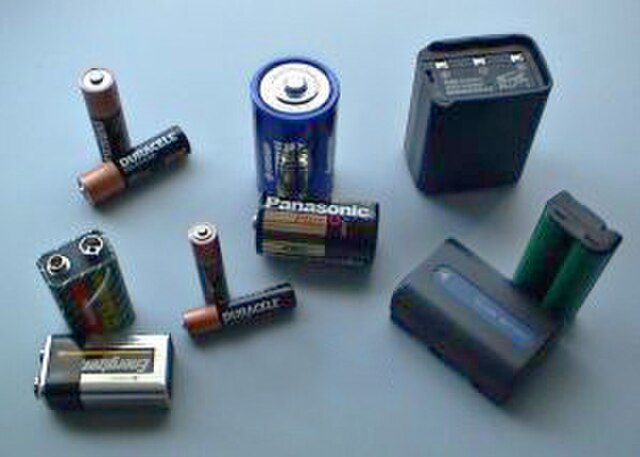Here's a list of popular chemical batteries used today, along with their advantages and disadvantages:
🔋 1. Lithium-Ion (Li-ion) Battery
Used in: Smartphones, laptops, electric vehicles (EVs), solar storage.
-
✅ Pros:
-
High energy density (more power in small size)
-
Lightweight
-
Rechargeable with long cycle life
-
Low self-discharge rate
-
-
❌ Cons:
-
Expensive
-
Sensitive to high temperatures
-
Risk of overheating or explosion if damaged
-
Requires protective circuitry
-
🔋 2. Lithium Iron Phosphate (LiFePO₄) Battery
Used in: EVs, solar systems, power tools.
-
✅ Pros:
-
Very safe and thermally stable
-
Long lifespan (more cycles)
-
Environmentally friendly (non-toxic)
-
-
❌ Cons:
-
Lower energy density than other Li-ion types
-
Slightly heavier and bulkier
-
🔋 3. Nickel-Cadmium (Ni-Cd) Battery
Used in: Power tools, medical equipment, aviation (older tech).
-
✅ Pros:
-
Durable, performs well in extreme temperatures
-
High cycle life
-
Fast charging
-
-
❌ Cons:
-
Memory effect (capacity loss if not fully discharged)
-
Contains toxic cadmium (environmental hazard)
-
Lower energy density than Li-ion
-
🔋 4. Nickel-Metal Hydride (NiMH) Battery
Used in: Hybrid cars, rechargeable AA/AAA batteries.
-
✅ Pros:
-
Higher capacity than Ni-Cd
-
Less toxic
-
Affordable and widely available
-
-
❌ Cons:
-
Still suffers from memory effect (less than Ni-Cd)
-
Higher self-discharge rate than Li-ion
-
Shorter lifespan
-
🔋 5. Lead-Acid Battery
Used in: Cars, UPS systems, solar storage, industrial use.
-
✅ Pros:
-
Inexpensive and well-established
-
High surge current (great for car starters)
-
Recyclable
-
-
❌ Cons:
-
Heavy and bulky
-
Limited cycle life
-
Contains toxic lead and corrosive acid
-
Low energy density
-
🔋 6. Solid-State Battery (Emerging)
Used in: Future EVs, portable electronics (under development).
-
✅ Pros:
-
Very high energy density
-
Much safer (non-flammable solid electrolyte)
-
Longer life cycle
-
-
❌ Cons:
-
Currently expensive and not widely available
-
Still in development for large-scale use
-
🔄 Summary Table:
| Battery Type | Energy Density | Safety | Cost | Lifespan | Main Use |
|---|---|---|---|---|---|
| Li-ion | High | Moderate | High | Long | Phones, EVs, laptops |
| LiFePO₄ | Medium | Very High | Medium | Very Long | EVs, solar |
| Ni-Cd | Low | Moderate | Low | Moderate | Tools, aviation |
| NiMH | Medium | Good | Moderate | Moderate | Toys, hybrid cars |
| Lead-Acid | Low | Low | Low | Short | Cars, UPS |
| Solid-State | Very High | Excellent | Very High | Long | Future EVs |
